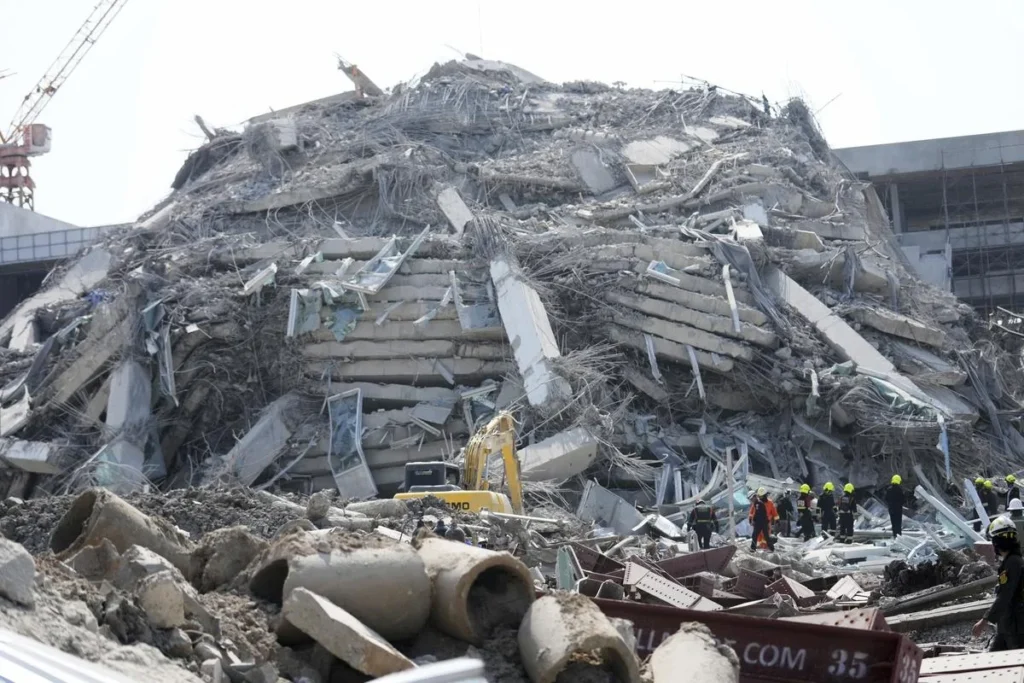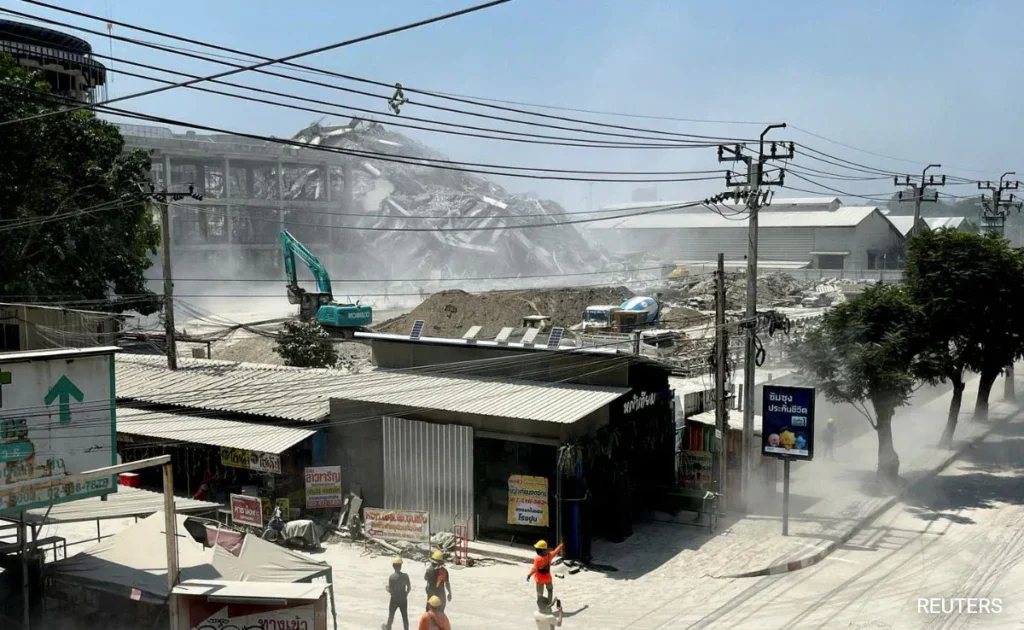A Powerful 7.7-Magnitude Earthquake Strikes Myanmar, Sending Shockwaves Across the Region
Myanmar Earthquake: A devastating 7.7-magnitude earthquake has struck near Mandalay, Myanmar, on March 28, 2025, causing widespread destruction and loss of life. Reports indicate that the tremors were strong enough to be felt in neighboring Thailand, where significant structural damage and casualties have also been reported. The earthquake, one of the strongest recorded in the region in recent years, has prompted immediate emergency responses from local governments and international aid organizations.
Severe Impact in Bangkok, Thailand
The earthquake’s tremors reached Bangkok, leading to chaos and destruction in the Thai capital. A 30-story building under construction in the Chatuchak district collapsed, claiming the lives of at least three individuals and leaving 81 people trapped or missing. Emergency response teams are actively working to rescue survivors and provide medical aid to the injured.
The force of the tremors led to major traffic disruptions, with roads being temporarily closed due to safety concerns and emergency operations. The Bangkok Metropolitan Administration (BMA) has advised residents to stay indoors and avoid unnecessary travel until aftershocks subside. Meanwhile, hospitals in the city are operating at full capacity, attending to those affected by the earthquake’s secondary impacts, such as falling debris and panic-related injuries.
In addition to structural damage, public transportation services faced disruptions, with metro and light rail systems experiencing partial suspensions. The tremors also affected the Stock Exchange of Thailand, leading to a temporary halt in trading activities. The Thai government has swiftly declared Bangkok a disaster zone, deploying emergency resources to support rescue and recovery operations. Local officials are also working to assess damage to critical infrastructure, such as bridges, tunnels, and water systems, to prevent further casualties.
Devastation Due to Myanmar Earthquake

In Myanmar, the earthquake resulted in extensive destruction, with buildings and bridges collapsing under the sheer force of the tremors. Hospitals, including the Naypyidaw hospital, reported at least 20 fatalities, with many more feared injured or missing. Reports indicate that several historical sites and temples have also suffered damage, raising concerns about the preservation of Myanmar’s cultural heritage. In response to the crisis, the ruling military junta has declared a state of emergency in six regions and is actively seeking international aid to support relief efforts.
Beyond structural damage, the earthquake has disrupted communication networks, making it difficult for rescue workers to coordinate efforts. Power outages have been reported in multiple cities, including Mandalay and Naypyidaw, leaving thousands without electricity. The government has deployed military units to help restore essential services and distribute aid to affected communities.
Authorities Warn of Aftershocks and Urge Caution
As the situation continues to evolve, authorities in both Myanmar and Thailand are urging residents to stay vigilant. Experts warn that aftershocks may follow, potentially causing additional damage. Citizens are advised to adhere to local advisories and emergency protocols to ensure their safety.
Seismologists have noted that aftershocks could persist for several days or even weeks, further threatening structures that have already been weakened. Safety measures, including evacuation protocols and emergency shelters, are being put in place for those in high-risk areas. Additionally, humanitarian organizations are preparing for long-term relief efforts, anticipating ongoing needs for medical care, food, and temporary housing.
Global Response and Ongoing Rescue Efforts
Search and rescue operations are underway in both countries, with local and international organizations stepping in to assist. Relief teams are focusing on clearing debris, locating survivors, and providing medical care to those affected. International humanitarian agencies are closely monitoring the situation and preparing to send aid where needed. The United Nations, Red Cross, and other global relief organizations have already begun mobilizing resources, while neighboring countries, including China and India, have offered assistance.

Volunteers and local communities are also playing a crucial role, coordinating food and water distribution for displaced individuals. Social media platforms have become a key tool for locating missing persons and sharing emergency information, helping reconnect families and provide real-time updates on rescue efforts.
The Road to Recovery
As Myanmar and Thailand grapple with the aftermath of this catastrophic event, efforts are being made to assess the full extent of the damage. The global community is expected to play a crucial role in supporting recovery initiatives. Rebuilding efforts will likely be extensive, with a focus on reconstructing damaged infrastructure, restoring essential services, and ensuring long-term support for affected communities.
Governments and aid agencies are urging donations and volunteer support, emphasizing the need for medical supplies, food, and temporary housing. Organizations on the ground are working to ensure that aid reaches the most vulnerable populations, particularly those in remote and rural areas that may not have immediate access to assistance.
More updates will be provided as authorities continue their assessment and relief efforts progress. Stay informed as new details emerge about the Myanmar earthquake and its far-reaching impact on the region.


